Botanical Illustration: Sketchbook studies
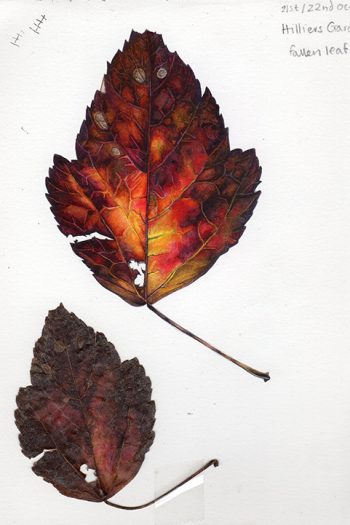
A sketchbook is a vital part of both the drawing and the learning process for me. Being asked to consider my relationship with them recently by Illustrator Magazine has made me pause. It’s not something I’ve thought about before, but it has made me realize just how vital these tools are to me.
This blog forms the base of my article (soon to appear in Illustrator magazine.)

Pencil sketchbook notes on lichen species studied at a Radnorshire Wildlife Trust event
What is a sketchbook for?
All my sketchbooks are hotpress watercolour paper, and robust. Currently I’m a big fan of “Fat Pads” as they’re made from Fabriano paper. I love the flexibility the spiral binding gives.
The first purpose of my sketchbooks is to take field notes. Using my sketchbook, I draw the plant in situ, catching the details of its colours and anatomy. I also include the usual growth pattern of the entire plant (its “habit”). There are voluminous written notes, and messy piles of measurements involved. This is clearly visible in my studies of the Blackstonia. The lone yellow flower was the only specimen I found in that particular location, so it was imperative not to pick it. Quite often I’ll stick in parts of the plant itself, thus ensuring the details of a leaf vein or petal are accurate.
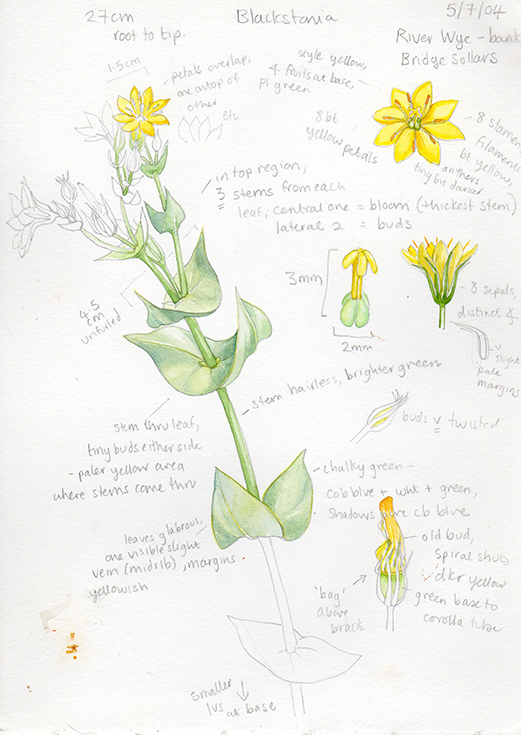
Page of notes on Yellow wort Blackstonia perfoliata from my sketchbook 2004 (used later to illustrate the plant in the HarperCollins Flower Guide by David Streeter)
Using my sketchbook for work
I use my sketchbooks to gather enough knowledge to reconstruct and illustrate the entire plant at a later date. It could be useful decades in the future or at a time of year when it’s not blooming. This explains why the studies are partial. As long as I can see the shadow pattern and veins on a leaf, and the colours of a couple of flowers, I’ll be able to build a whole plant. I’ve tested this out several times, and resorting to my sketchbook studies has allowed me to get all the detail I need to complete a commission.
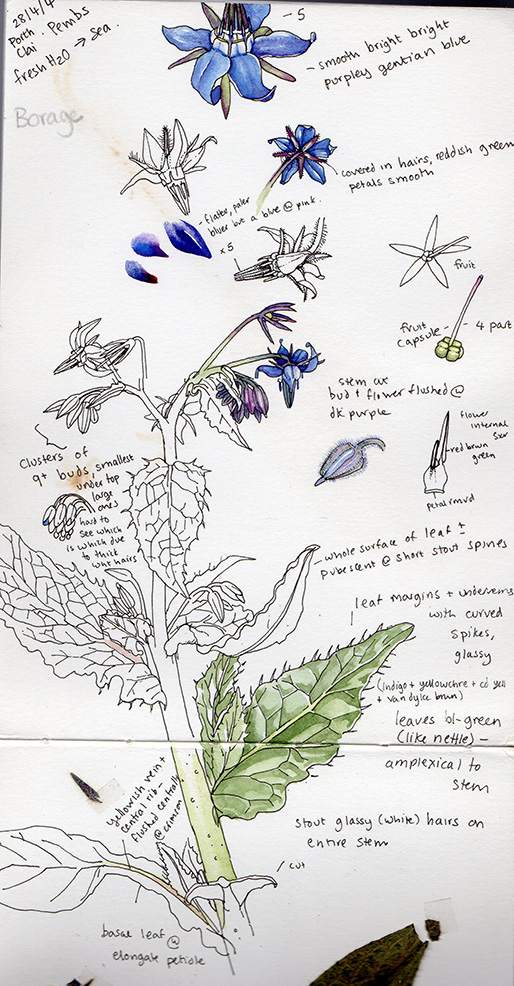
Page of notes on Borage Borago officinalis from my sketchbook 2004 (used later to illustrate the plant in the HarperCollins Flower Guide by David Streeter)
Learning from sketchbooks studies
By drawing a plant you take the time to look at it, and learn from it. It’s only when lost in the minute details that you discover new and thrilling facts about the anatomy of your flower. The way the leaves attach to a stem, how the seeds are crammed together in the fruiting capsule, the geometry of a bud… This is what thrills me as much as anything else I do; discovering new things as a result of taking the time to learn by drawing.
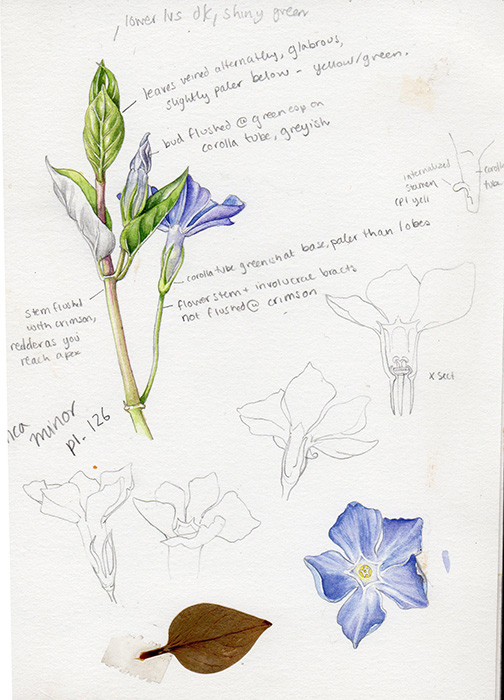
Periwinkle Vinca major sketchbook study
A sketchbook as a notebook at lectures
I also use my sketchbooks to take notes on seminars and talks. Sketches of images on the screen and from specimens provided get included. This is shown with these sketches of lichens. I’m examining their different physical forms, and observing their fruiting bodies under a dissecting microscope. Without a sketchbook I’d forget everything I was told within days!
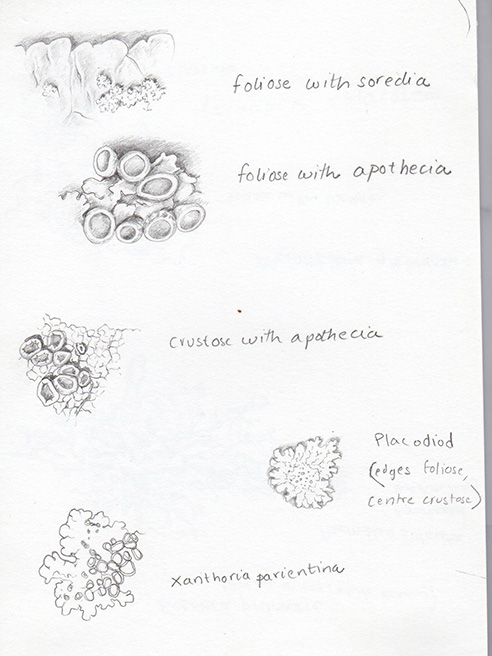
Notes taken on lichen morphology at a talk by IAPI. For more on the Lichen lesson read my earlier blog.
Using a sketchbook to pass the time
One last way I use my sketchbooks is to pass time when I’m at an exhibition, or demonstrating to the public. You need to be drawing something. Drawing is what they want to see you doing, but you need to choose a subject which doesn’t need to be finished, nor to be perfect. Something to work on, then drop as you have a 40 minute chat about the historical approach to naming ferns, or try to get a toddler to draw a daisy.
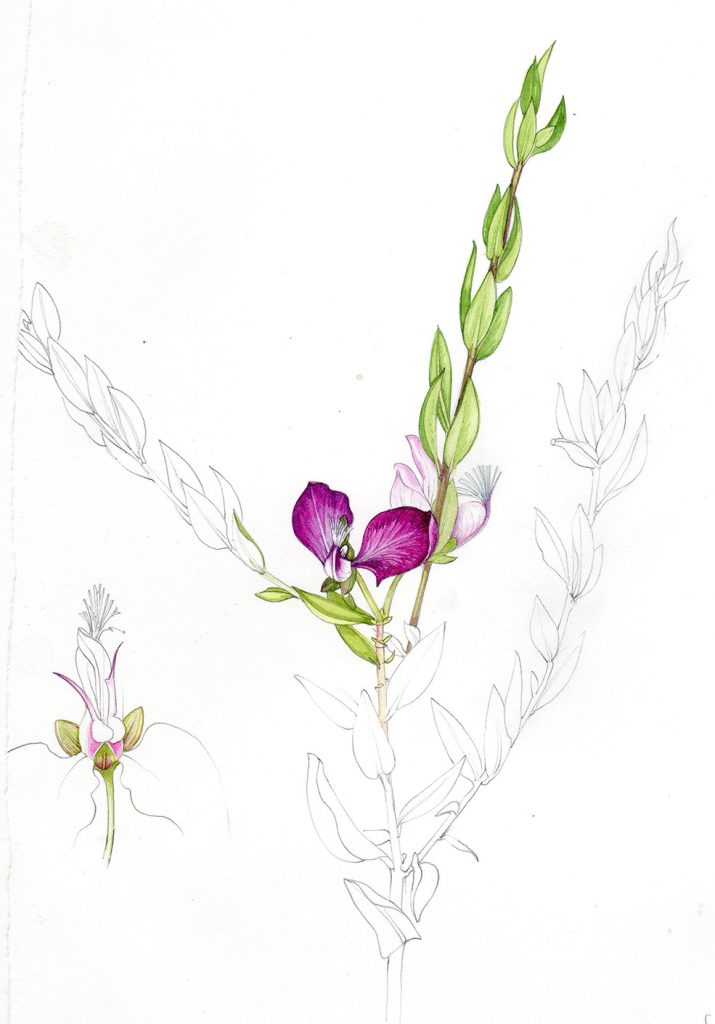
Sketchbook study of Polygala fruticosa done at the National Botanic Gardens of Wales. It demonstrates how I paint, and passes time.
I tend to pick up whatever comes to hand, a nearby plant or a fallen leaf. Sometimes, I end up being very fond of these gentle studies. They remind me of whatever event I was at. It can be a real luxury to just dabble about with a subject.
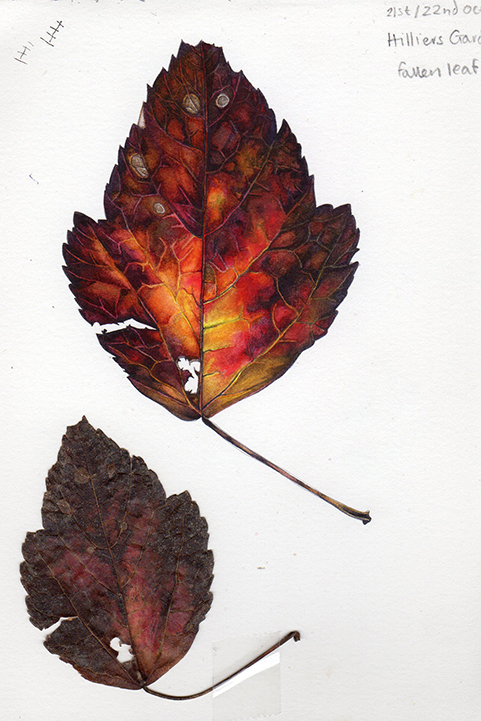
Sketchbook study of leaf from Hilliers Botanic Gardens in Hampshire (where I was exhibiting and demonstrating)
So as a learning tool, a record of events and shared knowledge, a tool-box for future illustrations, and a way to constantly hone my craft and enjoy my trade there’s nothing that can beat the keeping of a sketchbook.
For more on how I go about creating sketchbook studies, please check out my earlier blog.
If you’d like to see more of my sketchbook studies, please visit the gallery, or my Pinterest page.

